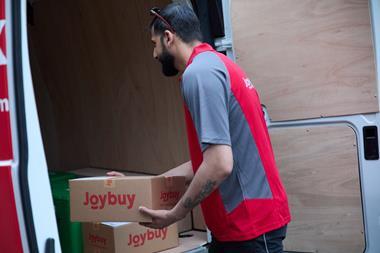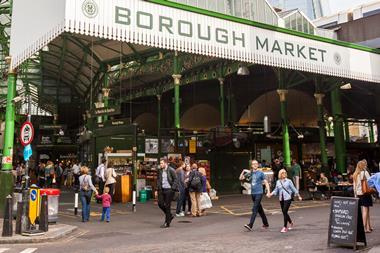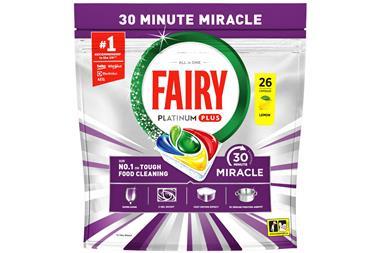The year 2000 was a record breaking time for The Grocer. We broke more exclusive stories than ever before as our team of journalists tracked events in the industry in the throes of a ferocious price war, bullied by the government, relentlessly innovating, and adapting to the challenges of organics, GMOs, e-commerce and the holy grail of food chain unity
It racked up a bill for the industry of £24m and wasted a lot of executive time. And what did the 1,100 page Competition Commission report leave in its wake, apart from egg on Stephen Byers' face as Britain's supermarket industry was all but vindicated?
Well, the secretary of state for trade and industry wasn't going to let the big boys off the hook completely.
Although the multiples were cleared of having created a monopoly, the commission reported that the big five exercised power over suppliers which acted against the public interest. It found 30 common "practices" which damaged suppliers, causing them to invest less and spend less on product development.
Twenty-two of the 24 retailers investigated by the commission (the exceptions being M&S and Lidl) were found to have consistently sold some frequently purchased items below cost price and a raft of retailers were also found to have practised price flexing.
But although the Rip-off Britain slurs were thoroughly discredited, Byers ordered a code of practice to be drawn up, the only action to come out of the 16-month investigation, and which brushed aside not just agriculture minister Nick Brown's hard work with the multiples and IGD to create a voluntary code, but also Sainsbury's efforts to unveil its own code.
Yet while the industry has the irritation of the code, not yet at final draft, it could take comfort that Byers, despite cautioning against limited choice in some areas, decided not to prevent new store openings, and asked only that the OFT monitor the situation.
Meanwhile, most supermarket chains were also playing musical chairs in the boardroom as multiples fought to improve performance in increasingly competitive conditions. First to go was Somerfield's David Simons, followed by Sainsbury's Dino Adriano. They were replaced by Alan Smith and Sir Peter Davis respectively. Budgens lost John von Spreckelsen to Somerfield, and replaced him with Martin Hyson.
Peter Salsbury finally gave up his post at the ailing Marks & Spencer to make way for Luc Vandevelde, while Asda/Wal-Mart's Allan Leighton stunned everyone by leaving Paul Mason as he went off to "go plural". Simon Hughes only lasted five months as head of Kwik Save, leaving T&S's Graham Maguire in charge.
The Co-op was the only chain to go through a really seminal change in March when the CRS merged with the CWS after years of internal agonising and organising.
Sainsbury, meanwhile, struggled with poor profits and defecting shoppers, eventually calling in TV hunk Jamie Oliver to head up a new ad campaign.
Safeway started off the year as a poor relation, but Carlos Criado-Perez really worked magic, ditching the loyalty card and successfully operating a high:low pricing strategy, concentrating on local promotions. One million new customers were delivered. Criado-Perez even gloried in a "dirty tricks" campaign against Asda, leafleting its rival's car parks.
The quietly confident Waitrose and Morrisons enjoyed soaring profits as they both concentrated on what they do best customer service and quality and no-nonsense retailing respectively.
Marks and Spencer stayed stuck in the doldrums, losing profits and market share along with regular shoppers.
Asda's Wal-Mart sub-branded style Supercentre store in Bristol opened to a fanfare of glowing media reports, proving bigger can be better, while Sainsbury's launched its new-look flagship store in London's Cromwell Road soon afterwards with a host of initiatives promising a focus on quality.
Along with a huge drive in e-commerce, Tesco, persistently number one, pushed ahead with its overseas store development programme, targeting Thailand and Poland especially with its hypermarket format.
Somerfield headed in the other direction, selling off 46 of its 140 larger stores, raising £309m to reposition itself as a neighbourhood retailer. Many stores were snapped up by Waitrose and the CWS and quickly converted.
City analysts have been predicting acquisition activity for months. Carrefour and Ahold are still circling across the English Channel.
The year also witnessed a revolutionary step for business to business journalism as GrocerTV arrived, providing a feast of information via satellite tv on Wednesday mornings. We'll be back next year.
{{NEWS }}
Close menu
- Home
- Retail & Wholesale
-
Products & Suppliers
- Back to parent navigation item
- Products & Suppliers
-
Product Categories:
- Back to parent navigation item
- Product Categories:
- Alcoholic drinks
- Bakery
- Cereals & breakfast
- Cheese
- Chicken & poultry
- Chocolate
- Confectionery
- Crisps, nuts & snacks
- Dairy
- Fish
- Fresh produce
- Frozen
- Household
- Meat
- Own Label
- Sauces & condiments
- Seasonal
- Soft drinks
- Vaping
- Vegan & plant-based
- World foods
- Suppliers
- People
- Reports & Data
-
Topics A-Z
- Back to parent navigation item
- Topics A-Z
-
Popular topics:
- Back to parent navigation item
- Popular topics:
- Cost of living crisis
- Crime
- Deposit Return Schemes
- Finance
- Government & Regulation
- Health
- Inflation
- Loyalty
- Marketing
- Mergers & Acquisitions
- New Product Development
- Sourcing
- Supply chain
- Sustainability & environment
- Technology
- Ultra Processed Foods
- Vaping
- A-Z all topics
- Content by type:
- Events
- Ask iA (beta)
- Subscribe now
Sign in to comment on this article
Not logged in before? Register for FREE guest access today.
You will be able to:
- Read more stories
- Receive daily newsletters
- Comment on stories
Advert



















No comments yet